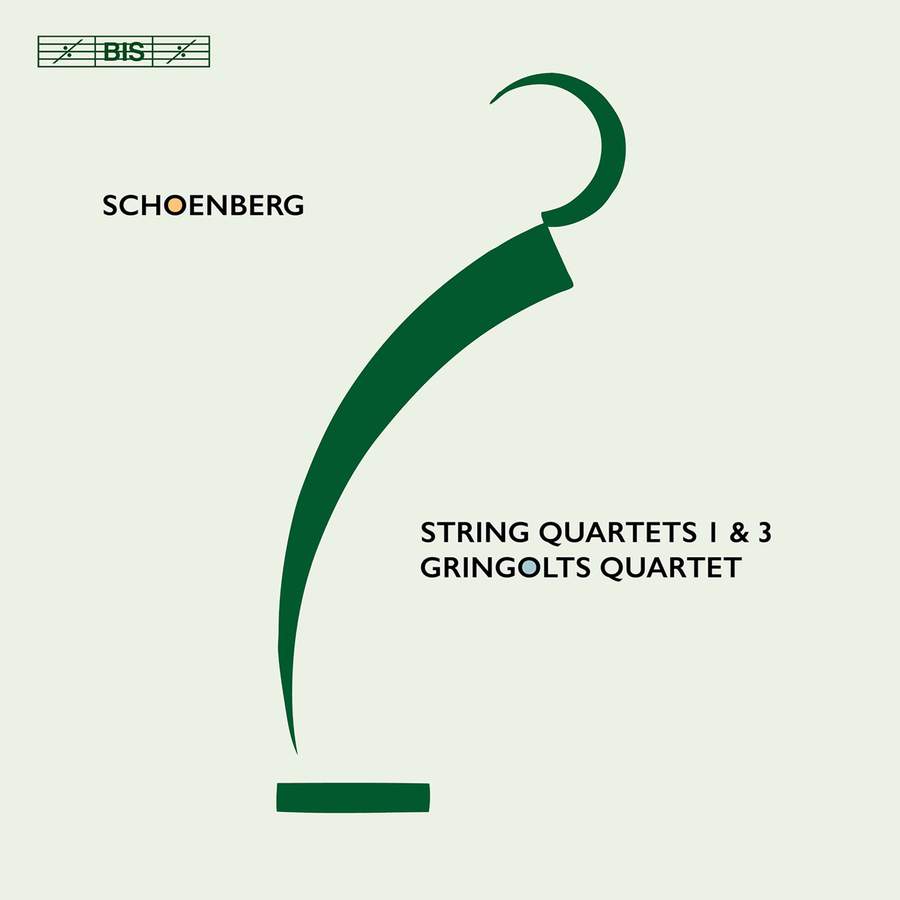SCHOENBERG String Quartets Nos 1 & 3 (Gringolts Quartet)
View record and artist detailsRecord and Artist Details
Genre:
Chamber
Label: BIS
Magazine Review Date: 06/2022
Media Format: Super Audio CD
Media Runtime: 80
Mastering:
DDD
Catalogue Number: BIS2567

Tracks:
| Composition | Artist Credit |
|---|---|
| String Quartet No. 1 |
Arnold Schoenberg, Composer
Gringolts Quartet |
| String Quartet No. 3 |
Arnold Schoenberg, Composer
Gringolts Quartet |
Author: Peter Quantrill
Volume 1 of this series was welcomed in these pages (10/17) for values of architectural clarity and expressive restraint which hold good for the sequel. Values, but not necessarily virtues: in the surging passions of Op 7, lacerating attack and Brahmsian portamento do not entirely compensate for a quick, attenuated vibrato that belongs more to the sound of the Gringolts Quartet than to the Viennese idiom. But then breadth of tone and sentiment is as unfashionable in Brahms as it is everywhere else, and in that regard these are exemplary modern readings.
My benchmark in this repertoire is the LaSalle Quartet (DG, 11/71), for the rhythmic grip and definition of their readings: more strident-sounding than some, certainly more than the Gringolts, though that’s as much a matter of engineering as interpretation, and no more so than many recordings of Beethoven’s late and Brahms’s Op 51 quartets, which are the natural heritage of these pieces. There is an intrinsic toughness to the First Quartet especially that does not want effacing in favour of emollience, and in this regard I find the progress of the First Quartet’s inner movements a little too placid and easy for its own good.
An atmosphere of expectancy and not merely nervous tension is established by the LaSalle at the start of Op 30. The closer recorded sound from BIS and the flatter profile of the Gringolts suggest a fruitful ambivalence in the 12-note language, between the attractions of a new Classicism and the inexorable pull of Schoenberg’s Wagnerian heritage. Their vibrato broadens noticeably for the Adagio, and so there emerges a lovely cantabile that would have imparted more than schoolmasterly rectitude to the Scherzo’s main section.
I found it harder to get (and keep) my bearings in the finale of Op 30, where the LaSalle’s quicker tempo and steady melodic focus place Schoenberg where he belongs, at the end of the Haydn-Brahms line. Among contemporary versions of the cycle as a whole, however, the Gringolts stand out both for their technical refinement and for the projection of a kind of melancholy Jewish wit that reveals itself more readily in Schoenberg’s correspondence than in his music.
Discover the world's largest classical music catalogue with Presto Music.

Gramophone Digital Club
- Digital Edition
- Digital Archive
- Reviews Database
- Full website access
From £8.75 / month
Subscribe
Gramophone Full Club
- Print Edition
- Digital Edition
- Digital Archive
- Reviews Database
- Full website access
From £11.00 / month
Subscribe
If you are a library, university or other organisation that would be interested in an institutional subscription to Gramophone please click here for further information.




